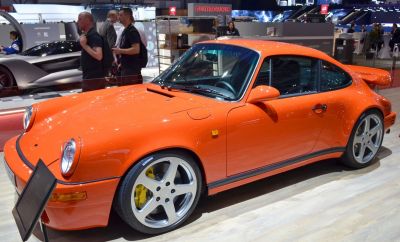 2009 Nissan 370Z Dimensions, Size & Specs
2009 Nissan 370Z Dimensions, Size & SpecsMeasurements of the 2009 Nissan 370Z, engineered for optimal performance and comfort
| Dimensions | |
|---|---|
| Length: | 4250 mm167.3 in13.9 ft |
| Width: | 1845 mm72.6 in6.1 ft |
| Height: | 1310 mm51.6 in4.3 ft |
| Trunk Capacity: | 235 liter8.3 cu ft |
| Weight Specifications | |
| Curb Weight: | 1496-1508 kg3298-3325 lbs |
| Maximal permitted Weight: | 1800 kg3968 lbs |
| Tire Specifications | |
| Rims Sizes: | 18-inch rims:
|
| Tire Sizes: |
|
The Nissan 370Z coupe, produced between 2008 and 2012, is a sporty and compact two-door vehicle that offers an engaging driving experience paired with sleek styling. Measuring 4250 mm (167.3 inches) in length, 1845 mm (72.6 inches) in width, and 1310 mm (51.6 inches) in height, the 370Z maintains a low and wide stance typical of performance-oriented sports coupes. Its curb weight ranges between 1496 to 1508 kg (3299 to 3324 lbs), providing a solid yet nimble chassis balance suited for responsive handling. The maximum permissible weight is 1800 kg (3968 lbs), supporting a stable ride dynamic without sacrificing agility.
This generation 370Z features a luggage capacity of 235 liters (8.3 cubic feet), offering practical storage space for weekend getaways or daily use, which is reasonable for a car in the sports coupe category. The vehicle rides on multiple rim options, including sizes 9J x 18, 10J x 19, 8J x 18, and 9J x 19, paired with tire sizes that range from 225/50 R18 to 275/35 R19, enhancing both aesthetic appeal and road grip.
The Nissan 370Z coupe from this period is a compact yet powerful sports car that successfully balances performance, style, and everyday usability. These dimensions and specifications place it comfortably within the competitive segment of affordable sports coupes, appealing to enthusiasts who prioritize driving dynamics and sleek design.
Discover the standout features that make the 2009 Nissan 370Z a leader in its class
Have a question? Please check our knowledgebase first.
The Nissan 370Z Coupe, produced from 2008 to 2012, measures 4250 mm (167.3 inches) in length, 1845 mm (72.6 inches) in width, and 1310 mm (51.6 inches) in height. These dimensions contribute to its sporty stance and compact size, optimizing both aerodynamic performance and street presence. Its relatively low height enhances its sleek profile, while the width supports stability during cornering and fast driving. These measurements position the 370Z as a compact sports car, smaller and lower than many contemporary vehicles, which is appreciated by enthusiasts for maneuverability and driving dynamics.
The Nissan 370Z Coupe from 2008-2012 has a curb weight between 1496 kg (3,298 lbs) and 1508 kg (3,324 lbs). This weight range reflects the car’s lightweight engineering aimed at enhancing responsiveness and agility. A lighter curb weight helps the 370Z deliver quick acceleration, sharp handling, and improved fuel economy compared to heavier competitors. The weight distribution is also favorable, contributing to balanced handling characteristics which are critical in sports cars. Despite its modest curb weight, the car maintains structural rigidity and safety, balancing performance and reliability.
The maximum weight capacity (gross vehicle weight) of the Nissan 370Z Coupe during 2008-2012 is 1800 kg (3,968 lbs). This figure includes the vehicle's curb weight plus the weight of passengers, cargo, and any additional load. Given the curb weight is around 1500 kg, the vehicle has a payload capacity of roughly 300 kg (661 lbs), which is typical for a two-seater sports coupe. This means it comfortably accommodates two occupants along with some luggage or gear without compromising on performance or safety. Overloading beyond this limit may impair driving dynamics and braking efficiency.
The Nissan 370Z Coupe offers a luggage capacity of 235 liters (8.3 cubic feet), which is moderate for a sports coupe. This amount of cargo space allows for everyday essentials like groceries, small luggage, or sports equipment. While not expansive, the trunk size is practical for weekend trips or commuting but limited for larger items or extensive cargo loads. Given the 2-seater configuration and sporty design focus, the trunk area prioritizes form and driving performance over extensive cargo volume, making it less suitable for families or heavy cargo transportation.
Yes, the Nissan 370Z from 2008-2012 comes with various tire and rim size options that enhance its performance and handling. The rims range from sizes 18-inch in widths of 9J and 8J, to 19-inch rims in widths of 10J and 9J, paired with tire sizes such as 245/45 R18, 275/35 R19, 225/50 R18, and 245/40 R19. Larger rim and wider tire configurations generally provide better grip and stability during cornering and high-speed driving, key aspects of a sports car’s appeal. These options allow owners to tune their vehicle for either comfort or more aggressive, track-oriented driving, impacting ride quality and responsiveness.
The Nissan 370Z Coupe, at 4250 mm (167.3 inches) long, 1845 mm (72.6 inches) wide, and 1310 mm (51.6 inches) tall, fits comfortably within the dimensions of a standard residential garage in most regions, which typically measure around 6 meters (20 feet) in length and 3 meters (10 feet) in width. Its compact size, combined with a relatively low height, means parking and maneuvering within typical garages is convenient for most users. However, clearance may vary depending on specific garage door openings, storage contents, and other factors, so users should verify their garage dimensions before parking.
Compared to its predecessor, the Nissan 350Z, the 370Z retains a similar sporty coupe profile but comes with subtle dimensional and weight changes that improve performance and aesthetics. The 370Z measures 4250 mm in length, which is slightly shorter or comparable to some 350Z trims that ranged around 4265 mm. Its width at 1845 mm is marginally wider, providing enhanced stability and an aggressive stance. The 370Z's height is slightly lower at 1310 mm compared to the 350Z’s roughly 1345 mm, improving aerodynamics and lowering the center of gravity. Weight-wise, the 370Z is slightly lighter or on par with the 350Z, with curb weights around 1496-1508 kg versus the 350Z's 1500-1600 kg range, contributing to improved agility and acceleration. These refinements establish the 370Z as a more focused evolution in Nissan's Z sports lineage.
The Nissan 370Z’s dimensions position it competitively within the compact sports coupe segment when compared to similar models like the Porsche Cayman, Toyota GT86, and Ford Mustang coupe (base trims). Its 4250 mm length and 1845 mm width are very close to the Porsche Cayman, which typically measures around 4325 mm in length and 1800 mm in width, meaning the 370Z is slightly shorter but wider. Compared to the Toyota GT86, which is about 4240 mm long and 1775 mm wide, the 370Z is more substantial in width, offering a more planted feel. When compared to larger muscle coupes like the base Ford Mustang, which is longer and wider, the 370Z remains more compact and lower in height for increased agility. Overall, the Nissan 370Z balances an aggressive footprint suitable for sporty handling with a size that remains practical for daily driving.
The Nissan 370Z generation introduced from 2008 to 2012 builds on Nissan's Z legacy by offering a more refined and potent sports coupe experience. Highlights include a robust 3.7-liter V6 engine delivering impressive horsepower and torque figures for responsive acceleration and spirited driving. The chassis was upgraded for improved rigidity and sharper handling, aided by its balanced weight distribution. Aesthetic changes include a more aggressive and aerodynamic exterior with sleeker lines and updated headlights and taillights, enhancing its modern yet muscular look. The interior saw ergonomic improvements and driver-focused controls. Options for larger rims and tires further allowed customization for performance driving. This generation blends characteristic Z-car heritage with technological advances, making it a popular choice among enthusiasts.
The Nissan 370Z offers multiple tire size options including 245/45 R18, 275/35 R19, 225/50 R18, and 245/40 R19, paired with rims from 18 to 19 inches in different widths (8J to 10J). Larger tires, like the 275/35 R19, provide increased grip and handling precision, especially during high-speed cornering and spirited driving, enhancing the sporty nature of the car. Conversely, smaller tires like 225/50 R18 offer a more comfortable ride with slightly less responsive handling, suited for daily driving and rougher road surfaces. These options give owners flexibility to prioritize performance or comfort, affecting suspension tuning, ride quality, and tire wear.
Discover similar sized cars.

| Production: | 1987-1988 |
|---|---|
| Model Year: | 1987 |
| Length: | 4260 mm167.7 in |
| Width: | 1840 mm72.4 in |
| Height: | 1280 mm50.4 in |

| Production: | 2018-present |
|---|---|
| Model Year: | 2018 |
| Length: | 4207 mm165.6 in |
| Width: | 1819 mm71.6 in |
| Height: | 1265 mm49.8 in |
